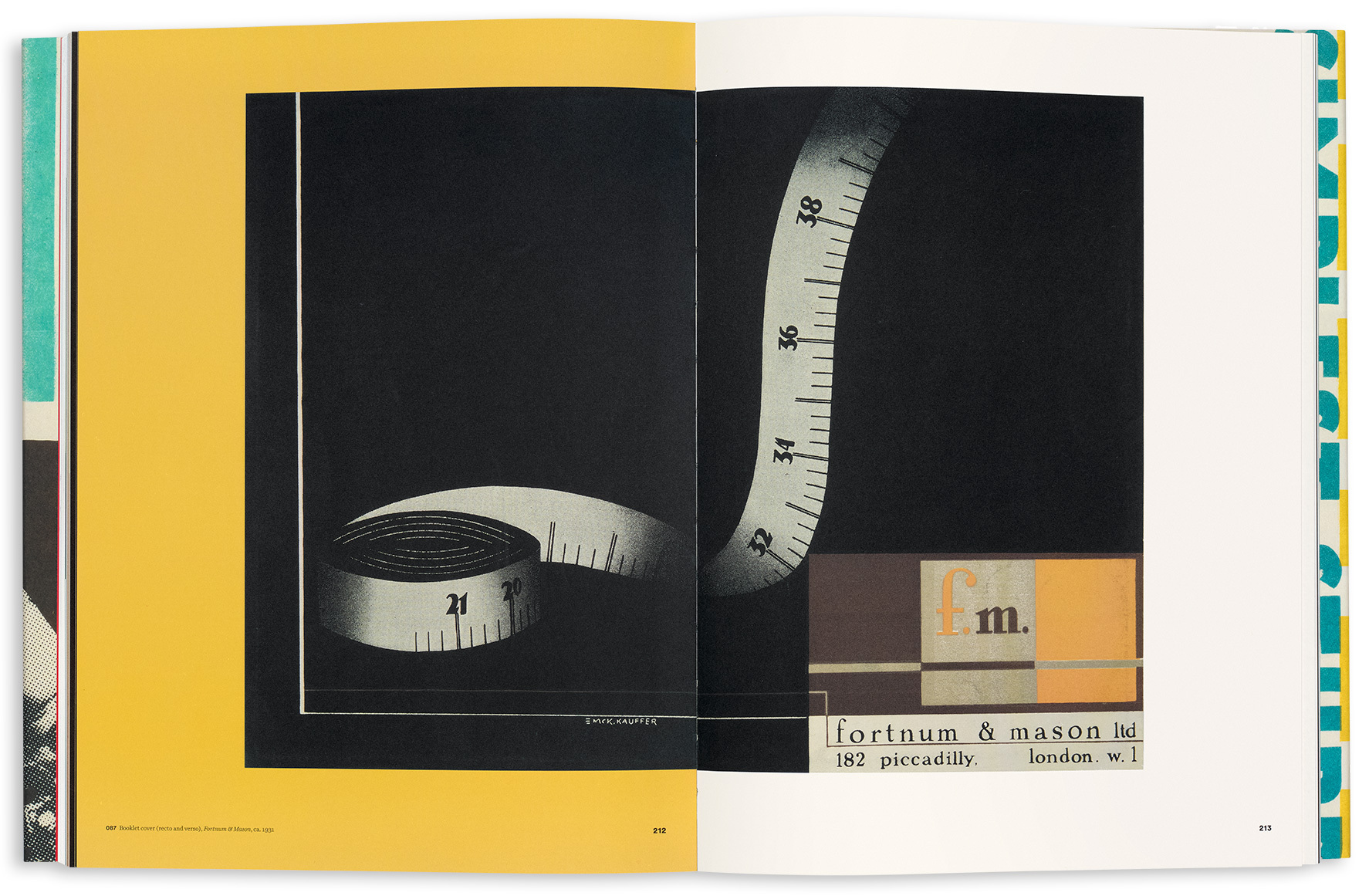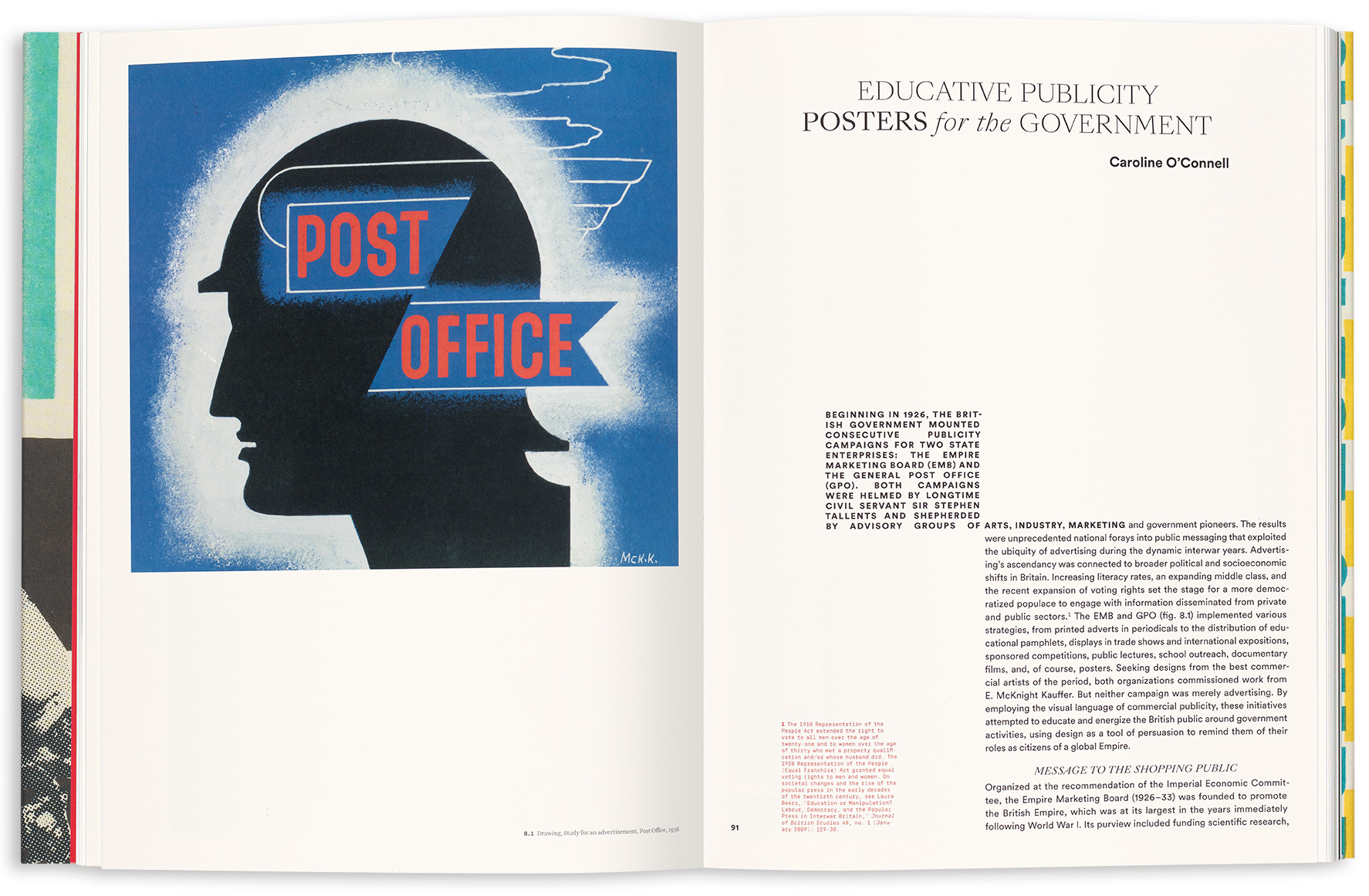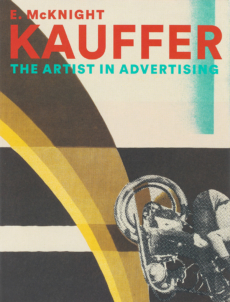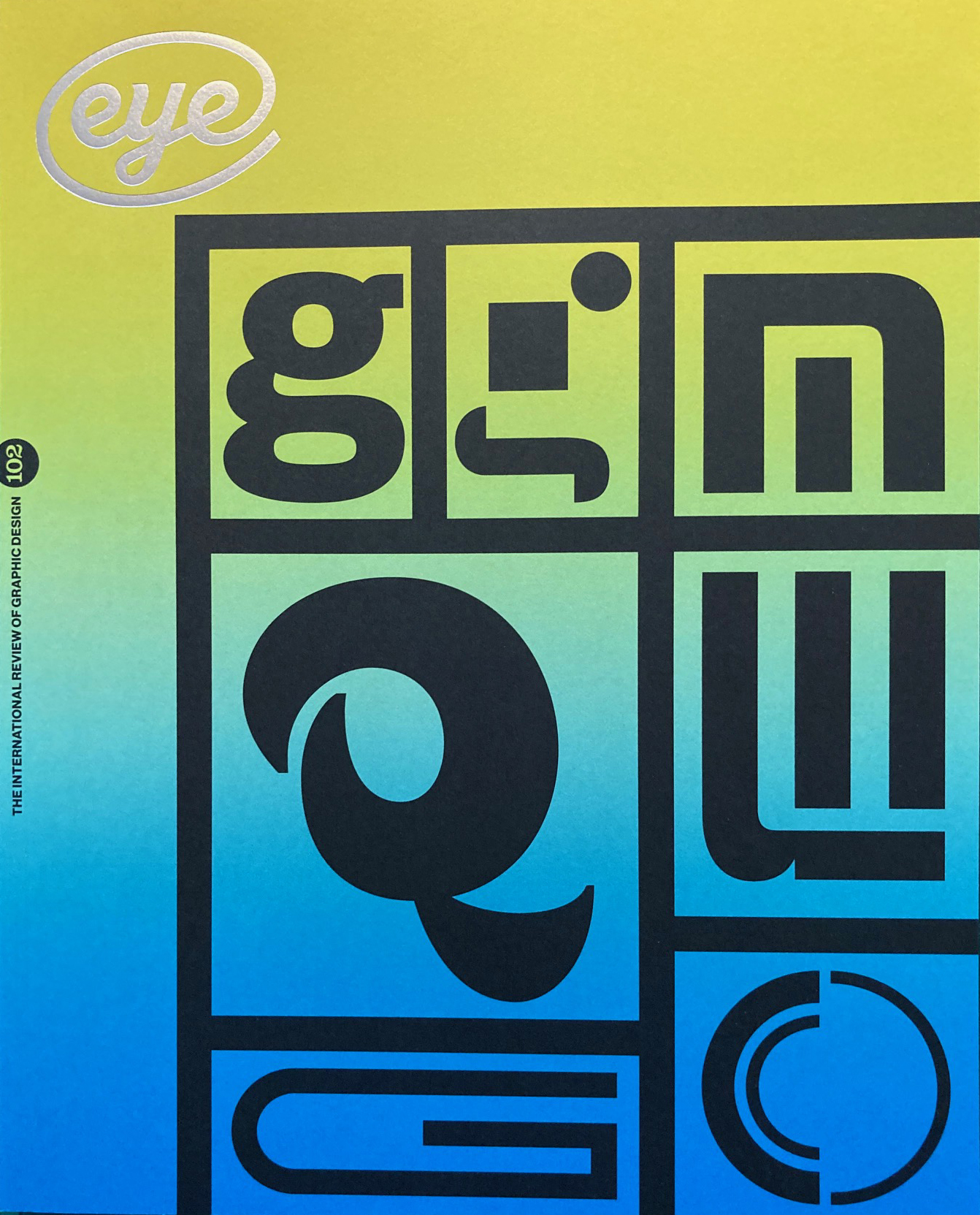Autumn 2021
A curatorial homecoming
E. McKnight Kauffer: The Artist in Advertising
Edited by Caitlin Condell and Emily M. Orr, Designed by Lucinda Hitchcock, Rizzoli Electa, $65, £50
‘As a bird, forever in flight, forever searching for a place to come to rest’ was novelist Arnold Bennett’s description of his friend Edward McKnight Kauffer (1890-1954), who is the subject of a book that accompanies an exhibition that runs at New York’s Cooper Hewitt until 10 April 2022.
The eleven confidently designed and meticulously researched chapters of E. McKnight Kauffer: The Artist in Advertising discuss Kauffer’s work, from stage sets to carpets, book illustrations, posters, costumes and murals; impressing upon us the diversity of Kauffer’s output, which shaped commercial visual culture on both sides of the Atlantic over 40 years. The sheer abundance and quality of images sets this book apart: the ‘plates’ section runs to more than 100 pages. Each essay is heavily illustrated, bringing Kauffer’s lesser known book jacket work together with archival photos and posters, shaping the quality and direction of discussion.
Lucinda Hitchcock’s imaginative and sympathetic page designs for E. McKnight Kauffer: The Artist in Advertising. Chapter opener with a drawing by Kauffer for the British General Post Office (GPO), 1936. Top. Fortnum & Mason’s booklet (recto and verso), 1931.

Threaded through several chapters is American-born Kauffer’s role in the emerging profession of graphic design in England – his home from 1915 to 1940. His belief in design’s potential to further the public good, rather than merely to drive business, underlined his early commissions. Like many of his contemporaries, Kauffer collaborated with like-minded people. He designed sets and costumes with the Arts League of Service, formed in 1919 to democratise art and theatre.
He aligned himself with a range of progressive causes, designing for the Peace Poster Service, the Peace Pledge Union and the Cambridge Anti-War Council, as well as taking on projects that now seem misguided, such as cover illustrations for Oswald Mosley’s fascist treatise, The Greater Britain, 1932. Lucrative commissions were often born out of collaborations initiated to improve the lot of others, as the book shows.
Steven Heller’s chapter on Kauffer’s work in New York, after his return in 1940, contrasts the advertising profession on either side of the Atlantic. While in England, Kauffer had been free to popularise visual ideas coming out of the European avant-garde movements: a pick-and-mix selection of visual tropes and ideas from Cubism, Vorticism and Futurism. In the US, however, advertising was, as Heller says, ‘aesthetically regressive’, majoring on literalism and cliché, with Kauffer’s work on book jackets such as MacKinlay Kantor’s Wicked Water coming ‘close to genre kitsch’.
In this fraught context, Kauffer’s work never returned to the levels it had reached in England, although there were still flashes of brilliance, as in his 1949 jacket for James Joyce’s Ulysses for Modern Library. Kauffer was honoured with a major exhibition at New York’s Museum of Modern Art in 1937, only the second graphic artist to have a solo show there, paving the way to his homecoming a few years later. But, as Juliet Kinchin explains, this resulted in disappointingly few commissions.
The abundant images allow for important questions absent from previous studies, such as Kauffer’s occasional resort to stereotyping when approaching race. Various representations, such as Kauffer’s illustrations for Langston Hughes’s Shakespeare in Harlem poems, highlight Hughes’s dissatisfaction with the commission. In some instances, short chapters leave us wanting a more detailed discussion than space allows.
There is a valuable focus in the book on textile designer Marion Dorn, with whom he collaborated on several projects after her arrival in London in 1923. Kauffer and Dorn understood interiors as the context for living, selling, display and travel.
Their shrewd negotiation of professional, public and private life, and their aptitude for creating close associations with the great and the good of politics and the arts, including many who were at the helm of emerging organisations and practices, resulted in interesting and lucrative commissions. It also allowed them to invest socially and philosophically in promoting British Modernism in design. Their relationship took an unexpected turn: ten years after returning to the US and 30 years after meeting, Kauffer and Dorn finally married – but separated soon after. Kauffer sank into depression and alcoholism, dying of cirrhosis at just 63.
This new exhibition and its book, written by authors associated with Cooper Hewitt and other US art and design institutions, acts as a kind of curatorial homecoming for Kauffer, given that previously the best known study was by British V&A curator Mark Haworth-Booth. E. McKnight Kauffer: The Artist in Advertising brings to public attention many more of the impressive 1500 works from the world’s premiere McKnight Kauffer collection at Cooper Hewitt and expands our understanding of the complexities of negotiating professional life as a graphic designer in the early twentieth century.
The cover of E. McKnight Kauffer: The Artist in Advertising, 2021, is also a poster, based on Kauffer’s designs for the Villiers Engineering Company 1928. Design: Lucinda Hitchcock.

Harriet Atkinson, fellow, University of Brighton, editorial adviser Bloomsbury Design Library
First published in Eye no. 102 vol. 26, 2021
Eye is the world’s most beautiful and collectable graphic design journal, published for professional designers, students and anyone interested in critical, informed writing about graphic design and visual culture. It is available from all good design bookshops and online at the Eye shop, where you can buy subscriptions and single issues.

